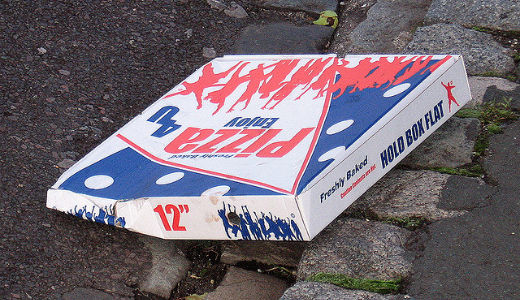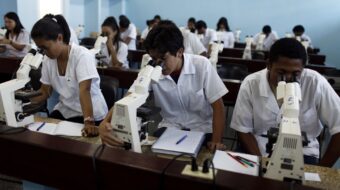
Science marches on and continues to shine a light on health and safety hazards that large corporations expose all of us to in their quest for profits and markets.
A recent example is reported in a November 9, 2010, article explaining the dangers of toxic chemicals found in fast food packaging. Chemists at the University of Toronto had been looking for the likely origin of certain chemicals that appear as contaminants in human blood. Apparently, the article notes, they’re from food packaging.
One of the most common of these chemicals, called PFCAs*, is found in human blood all over the world. This is PFOA. One of the chemists involved in the study, Jessica D’eon explained PFOA, the best known PFCA, is produced by the breakdown of PAPs, which “are applied as grease proofing agents to paper food contact packaging such as fast food wrappers and microwave popcorn bags.”
These chemicals have been made industrially since the 1940s and are so widely used that they are found in the blood of most humans worldwide. They are known to cause cancer and other toxic effects. Industry has been successful in keeping them unregulated.
Scientists are now pushing for some government intervention, but mere human health seems to always take a back seat to profits under capitalism. This new study shows that, in the words of research supervisor Scott Mabury, “the current use of PAPs in food contact applications does result in human exposure to PFCAs” in a significant way. The new research is also important because “some try to locate the blame for human exposure on environmental contamination that resulted from past chemical use rather than the chemicals that are currently in production.”
Some governments are at least waking up to the possible need to regulate these chemicals, but they will drag their feet, if history is any guide, and allow lobbyists from the food and chemical industries to slow down and even postpone regulations. Meanwhile, next time you unwrap your burger, just remember you may be getting a little dose of poison with every bite.
As for pizza, a 2007 study carried out in Italy determined that the chemicals in recycled cardboard could be contaminating your next slice. Here’s the deal. Trying to be “green” (and no doubt to save on production costs) manufactures are turning to recycled cardboard to make pizza boxes.
The problem is that the cardboard comes from many sources and often has printing on it, just as the pizza box does. There is a chemical in ink, DIBP, which lurks in the recycled cardboard. The heat of the nice hot pizza inside the box causes it to leach out of the cardboard and settle down on the pizza. When you order your pie with onions and peppers it actually come with onions, peppers and DIBP – which has a similar make up to androgenic hormones (also known as testoids) in your body. Testoids can reduce sperm production and also induce sex differences – with other dire results.
The scientists who conducted this study have developed a test that can detect the amount of DIBP in pizza boxes (as well as other recycled materials used in food packaging). In Italy the use of recycled cardboard in pizza boxes has been banned.
But what about the U.S.? Health conscious Americans can take comfort from a 2010 news story by Trish Green. According to her, Wal-Mart wants to reduce all waste – by reusing and recycling everything.
“As part of this recycling mission,” Green notes, “Wal-Mart is taking all of its cardboard waste and turning it into pizza boxes!”
Bon appétit!
*Full names of chemicals referenced:
PFCA: perflorinated carboxylic acid
PFOA: perfluorooctanoic acid
PAP: polyfluoroalkyl phosphate ester
DIBP: diisobutyl phthalate










